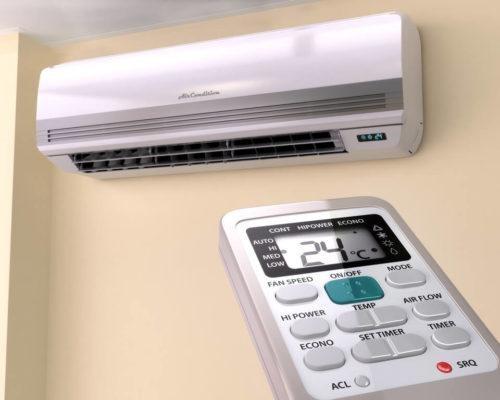7 Things To Check While Buying an AC
Air conditioners are amongst the hottest selling items (pun intended) in the home appliance segment. With rapid advancement in technology, air-conditioners today do a lot more than just throw cool air. Tens of brands have hundreds of different variants to choose from. While we are spoilt for choice, it is essential to measure certain parameters before you zero in on the unit. Keep this checklist handy the next time you set out in a quest for a new air-conditioner.
1.TONNAGE :
The cooling requirement of the space determines the tonnage for efficient cooling and long-term performance. As a rule of thumb, you will need an AC of 1 tonne for an area of 100-120 sq ft., 1.5 tonnes for anything between 150 and 180 sq ft. And up to 2 tonnes for rooms as big as 240 sq ft. Heat load in the room also plays an important role in deciding the right tonnage for your room.
Heat load is impacted by the number of electrical appliances in the room, exposure of the room to direct sunlight for major part of the day, average occupancy of the room in terms of number of people, and the number of doors and windows in the room.
2. WINDOW UNIT OR SPLIT AC :
Window ACs, as the name suggests, have the unit with all the components, connecting pipes and tubes bundled in a single box installable on a room’s window. A split AC, on the other hand, has two separate units. While the indoor unit has the
cooling coils, blower and air filter, the outdoor unit houses the compressor, condenser coils and other capillary tubing. While a window AC is usually cheaper and easier to install, split units are aesthetically pleasing, provide more cooling options, and are efficient and much quieter.
3. STAR RATING :
Look for the energy star rating offered by the Bureau of Energy Efficiency (BEE) on the model you intend to purchase. The ever increasing cost of power can make the operating cost of the unit a lot more expensive over the lifespan of the AC. It is recommended to opt for a four or five star rated AC. The higher the BEE star the unit has, the lesser electricity it will consume.
4. 100% COPPER ADVANTAGE :
The choice of metal used in the condenser unit, evaporator coils and connecting tubes impact the long-term functioning and operating cost of your unit. 100% copper units offer a superior cooling experience as copper is a great thermal conductor, helping save on power cost.
The durability that copper offers ensures that all components can easily be cleaned with a water spray and perform optimally with just two services a year as compared to four services required by other non-copper units. Copper condensers are also known to have a lifespan almost double than that of other alloy/ non-copper condensers.
Over a five-year lifecycle, 100% copper ACs are about 17% to 20% cheaper to run than other ACs.
5. INVERTER OR FIXED SPEED ACS :
It is important to first understand how inverter and fixed speed ACs work. In a fixed speed AC, the compressor motors run either at full speed or minimum speed. In simple words, the compressor of fixed speed with run at full speed till the room temperature goes little below the set temperature of the AC and then switch off. As the room temperature goes above the set temperature, the compressor again will start at full speed and this cycle continues. On the other hand, the compressor of inverter AC runs at variable speed depending on the cooling requirement of the room. In simple words, when the inverter AC starts to cool the room at set temperature, it starts at full speed. Post that depending on the cooling of the room and its heat load, the speed will keep adjusting. Inverter ACs consume less power as the compressor runs at an optimal speed. With a fixed AC, the compressor runs at full throttle till switched off. The constant process of switching on and off gobbles a lot of power.Most of the 5 Star and 4 Star ACs offered in the market in India are based on inverter technology and 3 Star and below ACs are dominated by fixed speed ACs. The selection of inverter or fixed speed ACs is dependent on the total number of
hours of usage in a typical day. Ideally, for higher number of hours, inverter ACs are advisable.
6. INSTALLATION AND MAINTENANCE :
Look for options that are convenient to install and easy to maintain. The greater the distance between the blowing unit and the condenser, the more your installation cost is going to be. The average cost goes up by Rs 200-300 per sq ft. for additional tubing and electrical wiring.
If you are looking for low maintenance ACs, opt for 100% Copper Advantage ACs. Copper ACs are resistance to corrosion and hence have very low failure rate in terms of gas leakages. Second advantage of copper ACs is they are easy to clean during regular service. A simple spray of water on the outdoor unit can get rid of major impurities settled on the condenser coil. These impurities, if not cleaned, hamper the cooling efficiency of the ACs. On the other hand, condenser coil of non- copper ACs are prone of corrosion and hence, have half the life as compared copper condensers. They are also difficult to clean due to their design, which has a minute gap between fins. Hence, the impurities are not cleaned fully, resulting in failure and damage.
7. BRAND AND PRICE :
A multitude of websites and blogs across digital platforms now allow us to see specifications of the unit, performance, user review and feedback on after sales service along with the option to compare models. Do your due diligence online by comparing various available models and make a decision based on your requirement and budget.


